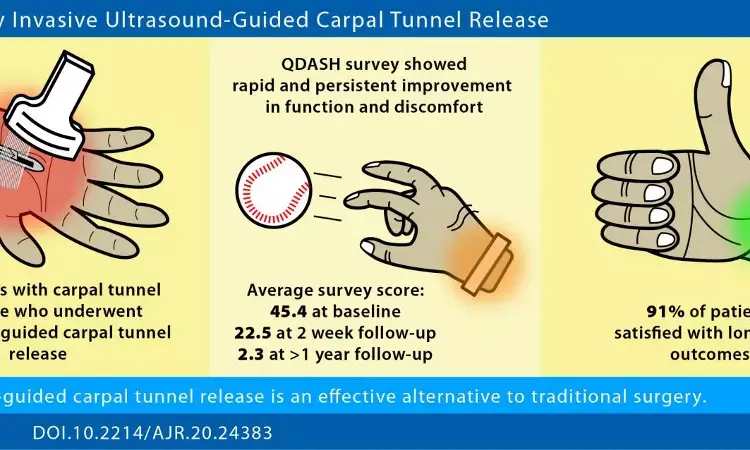- Home
- Medical news & Guidelines
- Anesthesiology
- Cardiology and CTVS
- Critical Care
- Dentistry
- Dermatology
- Diabetes and Endocrinology
- ENT
- Gastroenterology
- Medicine
- Nephrology
- Neurology
- Obstretics-Gynaecology
- Oncology
- Ophthalmology
- Orthopaedics
- Pediatrics-Neonatology
- Psychiatry
- Pulmonology
- Radiology
- Surgery
- Urology
- Laboratory Medicine
- Diet
- Nursing
- Paramedical
- Physiotherapy
- Health news
- Fact Check
- Bone Health Fact Check
- Brain Health Fact Check
- Cancer Related Fact Check
- Child Care Fact Check
- Dental and oral health fact check
- Diabetes and metabolic health fact check
- Diet and Nutrition Fact Check
- Eye and ENT Care Fact Check
- Fitness fact check
- Gut health fact check
- Heart health fact check
- Kidney health fact check
- Medical education fact check
- Men's health fact check
- Respiratory fact check
- Skin and hair care fact check
- Vaccine and Immunization fact check
- Women's health fact check
- AYUSH
- State News
- Andaman and Nicobar Islands
- Andhra Pradesh
- Arunachal Pradesh
- Assam
- Bihar
- Chandigarh
- Chattisgarh
- Dadra and Nagar Haveli
- Daman and Diu
- Delhi
- Goa
- Gujarat
- Haryana
- Himachal Pradesh
- Jammu & Kashmir
- Jharkhand
- Karnataka
- Kerala
- Ladakh
- Lakshadweep
- Madhya Pradesh
- Maharashtra
- Manipur
- Meghalaya
- Mizoram
- Nagaland
- Odisha
- Puducherry
- Punjab
- Rajasthan
- Sikkim
- Tamil Nadu
- Telangana
- Tripura
- Uttar Pradesh
- Uttrakhand
- West Bengal
- Medical Education
- Industry
Ultrasound-guided carpal tunnel release less invasive, effective treatment option

Patients answered three questionnaires (Quick-Disabilities of the Arm, Shoulder, and Hand [QDASH] and two parts of the Boston Carpal Tunnel Syndrome Questionnaire: symptom severity [BCTSQ-SS] and functional status [BCTSQ-FS] scales) assessing the affected wrist's function and discomfort immediately pre-procedure, 2 weeks post-procedure, and at least one year post-procedure.
CREDIT
American Roentgen Ray Society (ARRS), American Journal of Roentgenology (AJR)
USAGE RESTRICTIONS
Leesburg, VA, -Ultrasound guidance allows carpal tunnel release to be performed with smaller incisions and quicker recovery than traditional open or endoscopic surgery.
Researchers have found in a new study that ultrasound-guided carpal tunnel release (UGCTR) is a safe, effective, and less invasive alternative to traditional open or endoscopic surgery in carpal tunnel syndrome.(UGCTR) quickly improves hand function and reduces hand discomfort. The study has been published in the American Journal of Roentgenology.
Because ultrasound guidance allows carpal tunnel release to be performed with smaller incisions and quicker recovery, five researchers from Thomas Jefferson University Hospital in Philadelphia, Pennsylvania set out to evaluate UGCTR's long-term efficacy in improving function and discomfort in patients with carpal tunnel syndrome.
Sixty-one UGCTR procedures performed in 46 patients (25 women and 21 men; mean age 60.6 years) with clinically diagnosed carpal tunnel syndrome were retrospectively reviewed. All procedures were performed under local anesthetic at an outpatient radiology office using the SX-One MicroKnife® (Sonex Health).
As first AJR author Sarah I. Kamel explained: "Patients answered three questionnaires (Quick-Disabilities of the Arm, Shoulder, and Hand [QDASH] and two parts of the Boston Carpal Tunnel Syndrome Questionnaire: symptom severity [BCTSQ-SS] and functional status [BCTSQ-FS] scales) assessing the affected wrist's function and discomfort immediately pre-procedure, 2 weeks post-procedure, and at least one year post-procedure."
Median pre-procedure scores were 45.4 for QDASH, 3.2 for BCTSQ-SS, and 2.5 for BCTSQ-FS. Median 2 week post-procedure scores were 22.5 for QDASH, 1.7 for BCTSQ-SS, and 1.9 for BCTSQ-FS--all decreased (p < 0.001) from pre-procedure scores and surpassing reference standards for clinically important difference in scores.
Follow-up questionnaires were obtained for 90% (55/61) of wrists, a median of 1.7 years post-procedure, with further declines (p < 0.001) in median scores: 2.3 for QDASH, 1.2 for BCTSQ-SS, and 1.1 for BCTSQ-FS. At long-term follow-up, 96% (52/54) of wrists demonstrated lower QDASH, and 98% (53/54) lower BCTSQ (average of BCTSQ-SS and BCTSQ-FS), vs pre-procedure scores.
Although no immediate postoperative complications occurred, the authors of this AJR article detailed several response modifications for two patients who required surgery for complications experienced 8-10 days postoperatively (one for infection following injury and one for post-traumatic compartment syndrome).
"The procedure now includes more extensive preprocedural cleaning that extends to the forearm circumferentially prior to draping. A TegadermTM (3M Company, St. Paul, MN) is now placed at the distal third of the forearm to act as an additional sterile barrier at the edge of the sterile field. In addition, two passes of the ligament transection are performed routinely on all patients to potentially decrease the risk of remnant tissue that may contribute to incomplete release," Kamel et al. added
Hina Zahid Joined Medical Dialogue in 2017 with a passion to work as a Reporter. She coordinates with various national and international journals and association and covers all the stories related to Medical guidelines, Medical Journals, rare medical surgeries as well as all the updates in the medical field. Email: editorial@medicaldialogues.in. Contact no. 011-43720751
Dr Kamal Kant Kohli-MBBS, DTCD- a chest specialist with more than 30 years of practice and a flair for writing clinical articles, Dr Kamal Kant Kohli joined Medical Dialogues as a Chief Editor of Medical News. Besides writing articles, as an editor, he proofreads and verifies all the medical content published on Medical Dialogues including those coming from journals, studies,medical conferences,guidelines etc. Email: drkohli@medicaldialogues.in. Contact no. 011-43720751


